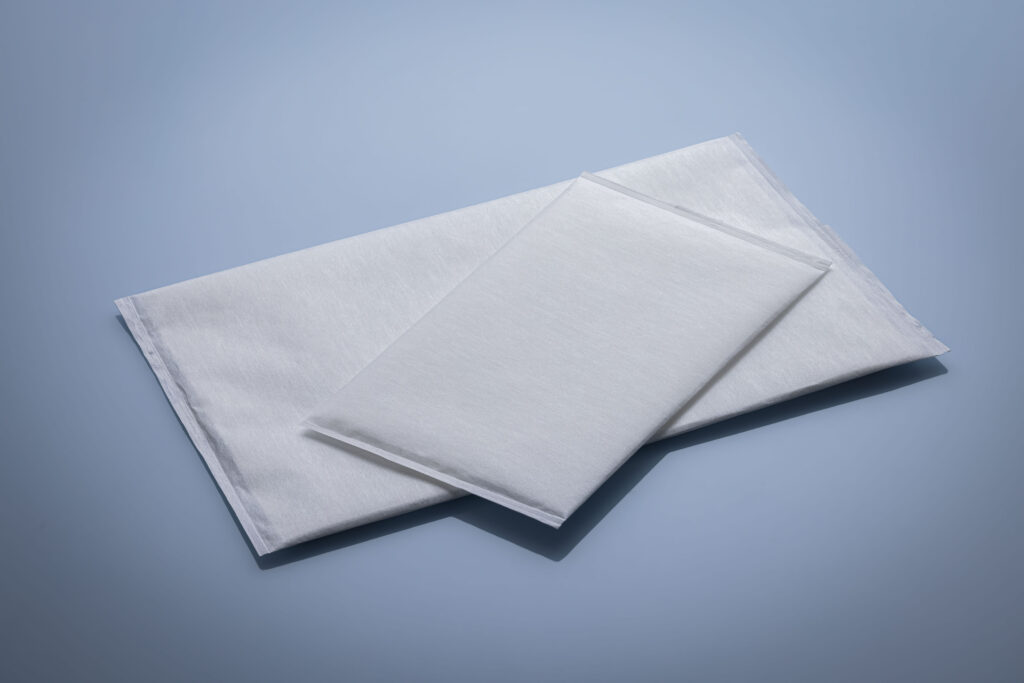Freudenberg PM’s Battery Pack Liquid Absorbers

(Courtesy of Freudenberg)
Freudenberg Performance Materials has developed an absorbent pad technology for installation inside electric vehicle (EV) battery packs (and outside their modules). These Battery Pack Liquid Absorbers are intended to enable passive climate control through long-lasting moisture management, with repeatable absorption and redrying cycles.
“The Battery Pack Liquid Absorbers have a proprietary, non-woven multilayer construction, which is additionally endowed with a super-absorbent powder,” says Dr. Ulrich Schneider, R&D manager at Freudenberg. “This construction is very breathable, and a key advantage provided by Freudenberg’s absorbent pads is that moisture can be absorbed before it turns into condensation.”
Efficient moisture management is key to preventing corrosion in battery packs, and hence contributing to their durability over their lifetime across the range of climate and weather conditions to which they will be subjected.
Fluctuating humidity
Freudenberg reports that in most use cases, humidity levels in ambient driving conditions are at least 40-50%, and they can fluctuate significantly within short stretches of time. The pads have been optimised to manage humidity variations during the day and night, and they address the needs of EVs even in very humid regions.
“In-house measures conducted by Freudenberg show that at 100% relative humidity at 40 C, a Battery Pack Liquid Absorber can absorb up to almost 200% of the weight of its absorbent component. Due to the way we’ve constructed it, such a pad responds immediately to changing humidity conditions in the battery pack to maintain the humidity level constant in the enclosure,” Dr. Schneider says.
“As a consequence, the pad directly absorbs any moisture appearing out of the air. And this function works in both directions: when the relative humidity level decreases from 100% to 50%, the Battery Pack Liquid Absorber reacts at once by redrying quickly. The weight of the pad then falls and remains stable at a low level, according to the present humidity. The measures show the absorption and redrying behaviour of the Battery Pack Liquid Absorbers is repeatable.”
For comparison, Freudenberg ran tests of silica bags (also known as ‘desiccant bags’), which are the standard solution across many industries for moisture absorption, under the same conditions as its tests on its Battery Pack Liquid Absorbers.
“These tests found the desiccant bags provided a maximum absorbency capacity of 40% of their own weight at 100% relative humidity and at a temperature of 40 C. The measures also showed the tested silica bags did not redry at 50% relative humidity as our proprietary solution did,” Dr. Schneider notes.
ONLINE PARTNERS































